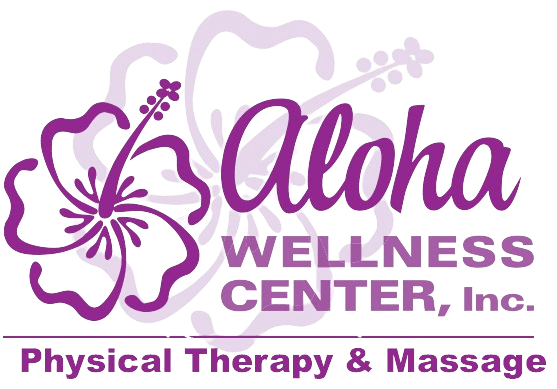A Guide to Injury Rehabilitation: What You Need to Know

Posted on February 5, 2024
Injuries are an unfortunate part of life, and they can happen to anyone, anytime. Whether you're an athlete pushing your limits or someone who just had a slip and fall accident, the road to recovery often involves injury rehabilitation. In this guide, we will delve into what you need to know about injury rehabilitation, covering its importance, common types, and effective strategies to help you get back on your feet.
Why is Injury Rehabilitation Important?
Injury rehabilitation is a crucial step in the recovery process, as it plays a pivotal role in restoring function and minimizing long-term damage. Here's why it's so essential:
- Promotes Healing: Rehabilitation techniques such as physical therapy, stretching, and exercise help improve blood circulation to the injured area, facilitating faster healing.
- Reduces Pain and Swelling: Targeted exercises and therapies can alleviate pain and reduce swelling, making the recovery process more comfortable and less cumbersome.
- Restores Function: Injury rehabilitation focuses on regaining strength, flexibility, and mobility, allowing you to return to your normal activities sooner.
- Prevents Re-injury: Proper rehabilitation minimizes the risk of re-injury by strengthening the affected area and improving your overall physical condition.
Types of Injury Rehabilitation
Injury rehabilitation can encompass a wide range of injuries and conditions. Here are some common types:
- Orthopedic Rehabilitation: This type of rehabilitation focuses on musculoskeletal injuries, including fractures, sprains, and strains. Physical therapy is often a key component to improve mobility and function.
- Neurological Rehabilitation: For injuries affecting the nervous system, such as stroke, spinal cord injuries, or traumatic brain injuries, neurological rehabilitation aims to regain lost motor skills and cognitive function.
- Cardiac Rehabilitation: Individuals recovering from heart surgeries or cardiac events benefit from cardiac rehabilitation programs, which include exercise, lifestyle changes, and education to enhance heart health.
- Pulmonary Rehabilitation: Lung conditions like COPD or asthma may require pulmonary rehabilitation to improve lung function through breathing exercises and physical conditioning.
- Sports Rehabilitation: Athletes often require specialized rehabilitation to get back in the game after sports-related injuries, such as ligament tears or muscle strains.
Effective Strategies for Injury Rehabilitation
Now that you understand the importance and types of injury rehabilitation, let's explore some effective strategies to aid your recovery:
- Consult a Professional: Seek guidance from a qualified healthcare provider, such as a physical therapist or orthopedic specialist, to create a tailored rehabilitation plan based on your specific injury and needs.
- Set Realistic Goals: Establish achievable milestones and goals to track your progress and stay motivated throughout the rehabilitation process.
- Follow Your Treatment Plan: Adherence to your prescribed exercises, therapies, and medications is crucial for a successful recovery. Consistency is key.
- Focus on Nutrition: A balanced diet rich in nutrients can promote healing and provide your body with the necessary fuel for recovery.
- Rest and Recovery: Adequate rest is essential to allow your body to heal. Overexertion can hinder your progress, so listen to your body and pace yourself.
- Stay Positive: A positive mindset can significantly impact your recovery. Surround yourself with a supportive network of family and friends to boost your morale.
- Monitor Progress: Regularly assess your progress and communicate with your healthcare provider to make necessary adjustments to your rehabilitation plan.
- Gradual Return to Activity: Don't rush back into your normal routine or sports activities. Gradually increase the intensity and duration to prevent re-injury.
- Preventative Measures: Once you've completed your rehabilitation, consider preventive measures like strength training and flexibility exercises to reduce the risk of future injuries.
Injury Rehabilitation: Your Road to Recovery
Injury rehabilitation is a journey that requires patience, dedication, and professional guidance. By understanding its importance, recognizing common types, and implementing effective strategies, you can make your recovery smoother and more successful.
Remember, every individual's rehabilitation process is unique. What works for one person may not be suitable for another, so always consult with a healthcare professional for personalized guidance. Your commitment to the rehabilitation process is the first step toward regaining your strength, mobility, and overall well-being.
At Aloha Wellness Center, our commitment to your well-being goes beyond symptom relief. We believe in a holistic approach to injury rehabilitation that considers your unique needs, lifestyle, and long-term wellness goals. Our integrated services aim to not only address current injuries but also prevent future issues, fostering a proactive and sustainable approach to health.
Injury rehabilitation is a journey, and at Aloha Wellness Center, we're here to guide you every step of the way. If you're on the path to recovery or seeking proactive measures to prevent injuries, reach out to us at (808) 723-1933. Let's work together to achieve lasting well-being and revitalization. Your journey to optimal health starts with Aloha Wellness Center - where personalized care meets transformative results.
Contact
Elevate Your Wellness Journey
Fill out the form below, and let's start this empowering journey together. Your path to relief, restoration, and revitalization begins here.
